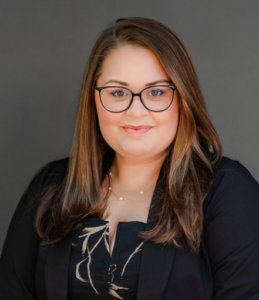Authors: Rhea Manohar, MPH; Leah Liszak; Meghan Etsey, Dr. Divya Krishnan on behalf of AMWA’s Gender Equity Task Force
A patient walked into a resident-run clinic to discuss fertility options for the first time. Her life had been defined by overcoming one barrier after another—surviving a childhood marked by violence and poverty, navigating a young adulthood shaped by addiction, and enduring years without stable shelter. She had weathered it all. Now, she was ready to begin the next chapter: pursuing her dream of becoming a mother. Her path to conception presented a challenge, nothing she wasn’t familiar with. One month turned to six, and six months turned to a year and still she was met with no success and left with frustration and guilt. Her hopes of motherhood felt fleeting. Unfortunately this reality is all too familiar for so many women—infertility. As the doctor outlined possible plans, she sat in silence, tears welling in her eyes, her hands tightly clasped to hold back the frustration. The moment the door closed behind the physician, her composure shattered. She cried out in anger and despair, overwhelmed by the weight of new questions: How could she ever afford treatment? Were these doctors the right people to guide her? Who would stand by her through this? And most painfully—why, after everything she had endured, did this have to be her struggle too?
Infertility affects an estimated 13.4% of women in the United States (CDC, 2025), yet access to fertility care remains deeply unequal. Across the United States, systemic inequities tied to socioeconomic status, race, and ethnicity create substantial barriers to accessing assisted reproductive technologies (ART), including in vitro fertilization (IVF) and other fertility services (Jain & Singh, 2023). Despite medical advancements that have made treatment more effective, these benefits are not reaching all who need them. Examining the structural, financial, and cultural dimensions of this issue reveals why disparities in fertility care remain so pervasive—and what can be done to address them.
Assisted reproductive technologies (ART) such as in vitro fertilization (IVF) remain prohibitively expensive, with a single cycle averaging $15,000–$20,000 (Duff-Brown, 2024). Insurance coverage is inconsistent, as only 21 states mandate some form of fertility coverage, with wide variation in scope, and self-insured employers are not required to comply (Duff-Brown, 2024; Resolve: The National Infertility Association, 2025). As a result, the high cost of fertility treatments functions as a gatekeeper, allowing only those with substantial financial resources to participate. Notably, for patients in lower-wage or hourly jobs, the added barrier of time off for frequent appointments further compounds inequity. These financial and structural barriers disproportionately impact Black, Hispanic, and Indigenous patients, who not only face higher rates of infertility but are also less likely to receive fertility evaluation or treatment compared to white counterparts (Gadson et al., 2024). One population-level study found that non-Hispanic Black women were almost two times less likely to undergo infertility services than white women, even after adjusting for socioeconomic status (Dieke, Zhang, Lawson, & Missmer, 2017), underscoring the dual impact of financial constraints and systemic racism in healthcare delivery.
Even when socioeconomic factors are accounted for, racial disparities in fertility care persist. Research suggests that implicit bias, limited provider outreach, and the underrepresentation of minority populations in clinical studies contribute to a lack of culturally responsive fertility services (Gadson et al., 2024). Providers may be less likely to refer Black women for treatment or may make assumptions about cultural or religious opposition without adequate discussion. These presumptions can lead to delayed diagnoses and missed opportunities for early intervention. Geography further compounds these inequities: fertility clinics are disproportionately concentrated in urban, affluent areas, leaving patients in rural communities with limited access. In addition to the few insurance companies that do offer some form of fertility coverage, it was found that 49% of policies that provided coverage required previous care from a reproductive endocrinologist before reimbursement (Ha et al., 2022). In 2017, it was found that 13 US states had less than 5 reproductive endocrinologists that were accredited by the Society for Assisted Reproductive Technology (ASRM, 2021). This geographic maldistribution reinforces existing inequalities, particularly for patients without the resources to travel for treatment (Beroukhim & Seifer, 2024).
Fertility struggles are often stigmatized, particularly in communities where cultural norms discourage open discussion of reproductive challenges. For women of color, this stigma can be compounded by a long history of medical discrimination and mistrust of healthcare systems. When layered with socioeconomic barriers, stigma creates an additional invisible barrier, deterring individuals from seeking care even when it is technically available (Beroukhim & Seifer, 2024). Intersectional inequities—where gender, race, and class converge—further magnify disparities in treatment access and outcomes.
The inequities in fertility care also have broader societal consequences. Infertility is not just a private struggle; it can affect workforce participation, economic stability, and mental health. Women who face barriers to fertility treatment often experience higher rates of depression, stress, and relationship strain (Gadson et al., 2024). When marginalized populations are disproportionately excluded from accessing treatment, the inequities reverberate across generations, shaping family formation patterns and deepening structural disadvantage. Addressing fertility inequities is therefore not only a matter of reproductive justice but also a public health priority.
Addressing disparities in fertility treatment access requires a multifaceted approach:
- Policy Reform: Expanding insurance mandates to cover ART nationwide would dramatically improve access. Federal legislation or broader employer-based coverage requirements could prevent disparities tied to state of residence (Duff-Brown, 2024; Resolve: The National Infertility Association, 2025).
- Targeted Outreach and Education: Public health campaigns should prioritize communities of color and lower-income populations, increasing awareness of infertility as a medical condition rather than a personal failing (Gadson et al., 2024). Such efforts can counter stigma and improve engagement with fertility care.
- Culturally Responsive Care: Training providers in cultural humility and implicit bias recognition is essential to ensure equitable referrals, diagnoses, and treatment. Representation in clinical trials must also be improved to ensure treatment effectiveness across diverse populations (Gadson et al., 2024).
- Expanding Access Points: Incentivizing fertility specialists to establish practices in underserved areas—or integrating fertility care into broader reproductive health clinics—would mitigate geographic disparities (Beroukhim & Seifer, 2024).
With the advancement of fertility treatments, access to these treatments should not be a privilege afforded only to those with wealth or proximity to urban centers. Reproductive justice requires that all individuals, regardless of race, income, or geography, have equitable access to the full spectrum of reproductive healthcare, including infertility services. Bridging these gaps is not only a matter of fairness but also a public health imperative.
References:
- Beroukhim, G., & Seifer, D. B. (2023). Racial and Ethnic Disparities in Access to and Outcomes of Infertility Treatment and Assisted Reproductive Technology in the United States. Endocrinology and metabolism clinics of North America, 52(4), 659–675. https://doi.org/10.1016/j.ecl.2023.05.005
- CDC. (2025, March 17). Infertility. Centers for Disease Control and Prevention. https://www.cdc.gov/nchs/fastats/infertility.htm
- Gadson, A. K., Sauerbrun-Cutler, M. T., & Eaton, J. L. (2024). Racial Disparities in Fertility Care: A Narrative Review of Challenges in the Utilization of Fertility Preservation and ART in Minority Populations. Journal of clinical medicine, 13(4), 1060. https://doi.org/10.3390/jcm13041060
- Jain, M., & Singh, M. (2023, June 7). Assisted Reproductive Technology (ART) techniques. U.S. National Library of Medicine. https://www.ncbi.nlm.nih.gov/books/NBK576409/
- Duff-Brown, B. (2024, July 12). Striking costs of infertility point to importance of IVF access and affordability. Stanford Institute for Economic Policy Research (SIEPR). https://siepr.stanford.edu/news/striking-costs-infertility-point-importance-ivf-access-and-affordability#:~:text=But%20the%20costs%20remain%20high,cycles%2C”%20the%20researchers%20write.
- Resolve: The National Infertility Association. (2025, May 30). Insurance coverage by state: Resolve: The National Infertility Association. Resolve. https://resolve.org/learn/financial-resources/insurance-coverage/insurance-coverage-by-state/
- Ha, M., Drees, A., Myers, M., Finkelstein, E. R., Dandulakis, M., Reindorf, M., Roque, D. M., Beall, S. A., Slezak, S., & Rasko, Y. M. (2023). In vitro fertilization: a cross-sectional analysis of 58 US insurance companies. Journal of assisted reproduction and genetics, 40(3), 581–587. https://doi.org/10.1007/s10815-022-02697-5
- Fertility evaluation of Infertile Women: A Committee Opinion (2021). ASRM. (n.d.). https://www.asrm.org/practice-guidance/practice-committee-documents/fertility-evaluation-of-infertile-women-a-committee-opinion-2021/
About the Authors
 Rhea Manohar, MPH, MS3
Rhea Manohar, MPH, MS3
Rhea Manohar is a second year medical student from St. George’s University. She has a Masters in Public Health with a concentration in Maternal and Child Health from George Washington University Milken Institute of Public Health and a Bachelors of Science in Microbiology, Immunology, and Public Health from the University of Miami. She served as Co-VP of OB/GYN Education for St. George’s University’s Women in Medicine chapter in St. George, Grenada where she developed and implemented hands-on workshops to further reproductive health issues and bolstered medical students’ abilities to navigate physician-patient communication. Prior to medical school, she was a research associate for Fors Marsh Group, where she led qualitative and quantitative public health research and campaign development for federal agencies (e.g., CDC, NIH, DHHS, CPSC). She is also a member of the Gender Equity Task Force and Reproductive Health Coalition within the American Medical Women’s Association. When she is not pursuing medicine, you can find her reading, exploring artistic passions, and spending time connecting with friends and family.
 Leah Liszak, MS3
Leah Liszak, MS3
Leah Liszak is a third year medical student from St. George’s University. She has a Bachelors of Science in Biomedical Science from Oakland University in Auburn Hills, Michigan. She served as the SMILEs Orphanage Home Coordinator of the St. George’s University Humanism Service Organization in St. George, Grenada where she fostered impactful relationships with at-risk female youth and developed seminars to educate, encourage, and engage their personal growth. She is also a member of the Gender Equity Task Force with the American Medical Women’s Association. When she is not pursuing medicine, you can find her enjoying time with friends and family, working towards athletic pursuits in the gym, and testing new pastry recipes.
Meghan Etsey is a fourth year medical student from St. George’s University. She has a Bachelors of Arts in Biology and a Bachelors of Arts in Nutrition and Dietetics from Bluffton University in Bluffton, Ohio. She served as the President of the St. George’s University’s Women in Medicine chapter in St. George, Grenada where she expanded relationships with the community and worked towards educating women and helping the youth. She is also a member of the Gender Equity Task Force and Sex and Gender Health Collaborative Committees within the American Medical Women’s Association. When she is not pursuing medicine, you can find her with her friends and family on different road trips and adventures exploring the world.
Dr. Divya Krishnan obtained a medical degree with honours at the University of Medicine and Health Sciences, St. Kitts. She is passionate about preventative medicine and community medicine. She believes that we can only begin to move towards good health for all patients, with health equity and consistent community education led by healthcare workers. When not working in the medical world, she spends her spare time learning outdoors (hiking, rock climbing, gardening), learning indoors through reading books, and studying to brainstorm creative ideas for how to improve her practice as a whole- for her patients and for her co-workers.


